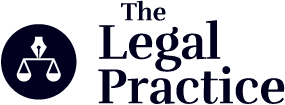Running a successful legal practice isn't just about winning cases; it's also about managing finances.
Legal billing is, for many attorneys, one of the most annoying and contentious aspects of managing your daily work. It requires an understanding of time management, bookkeeping, and compliance with regulations—all while providing a service to your clients that is both accurate and efficient.
It can be overwhelming for those just getting started, so in this guide I'm going to provide you with the tools to achieve success in legal billing.
The process of setting up legal billing doesn't have to be intimidating or difficult. With the right tools, you can track time accurately, maintain compliance with regulations, and increase your firm's efficiency in billing your clients. I'll show you how to get set up quickly and easily, provide some tips on how to make sure your clients are satisfied with their bills, and discuss some potential pitfalls that you should avoid when setting up your system.
Understanding How to Bill for Your Time
Tracking your time and managing billing for your legal firm is an essential part of running a successful business. To make sure you're running an efficient and profitable law practice, it's important to have an accurate understanding of how you're charging and getting paid for the work you do.
When starting out, there are a few key things to consider.
Firstly, it's important to ensure that you have the right tools for tracking your time. There are plenty of options available, such as online programs or apps that allow you to easily enter in activities and track your time efficiently.
I honestly find it surprising how many people are still struggling to record their time accurately in a complicated Word Doc or Excel sheet—there are some really easy tools for managing legal billing and time tracking below, and I definitely recommend you use them.
Secondly, make sure that any software or applications are compliant with the specific rules and regulations set by your state bar association. Finally, setting up accurate bill rates that reflect the nature of the services provided is essential to getting paid fairly for the work being done.
Overall, getting set up with legal billing requires some thought and understanding on behalf of the attorney or practice owner. Taking a few moments to understand the tools available and what needs to be considered when setting up pricing will go a long way toward ensuring success in this arena.
Setting Up a Billing System for Legal Services
Setting up a billing system can seem intimidating when you're just getting started, but the billing process is a necessary part of running a successful legal practice. Fortunately, there are some strategies you can employ to make the task easier and more efficient.
First, you'll need to choose a billing software that meets your needs. When selecting one, take into consideration its features, cost, customer support capabilities and integration with other systems you may be using. It's also important to select a software that can generate invoices and keep track of client accounts easily and accurately.
Once you've chosen the right software for your firm, it's time to start tracking your time. You can do this manually or via an online timer if your software supports it. Many programs will also allow you to create templates for quickly entering retainer fees or standard services that make tracking time easier for everyone involved.
Finally, once you have your system set up and you've begun tracking your time, be sure to stay organized! Keep all invoices in one place (either digital or physical) so they don't get lost in the shuffle of managing your practice. You may even want to consider setting up automatic invoicing at certain intervals so that clients know they need to pay their bill on time. With these strategies in place, managing billing at your legal practice will become simpler over time.
Types Of Legal Billing Tools To Try
You want to ensure that your firm's billing is done right, so you'll need the right tools for the job.
Fortunately, there are a variety of legal billing programs available on the market. Below are some of the best options for lawyers seeking to set up their own in-house billing system.
Legal Billing Software
The most popular type of legal billing software is time tracking software. These programs are designed specifically to make it easy to track your time for hourly billing and create accurate invoices. They can also help you track client payments and generate reports on time spent on different matters as well as billable hours.
Some of these types of programs allow you to actually process online payments, while the more basic ones are better suited to just tracking time and invoicing.
You do have to spend some time in the beginning setting up your hourly rates or entering in the types of flat fees associated with certain tasks, but once you have it set up, you pretty much just add your time entries and let the system do the rest.
Some popular cloud-based SaaS products for tracking billable time include Rocket Matter, Clio, Amicus Attorney, and Lexicata. There are, of course, some more generic options like QuickBooks Online, which is a general accounting solution.
Legal Trust Accounting
Legal trust accounting tools (an example of this is CosmoLex) are more advanced than simple billing and time tracking software. This type of software has additional functionality for trust accounting, so that you can both bill clients and manage client ledgers through a compliant IOLTA. Often, these products also have time-tracking modules in them, but they are more focused on helping you to manage client funds without mismanaging them.
Client Portals
Another tool that can be useful when setting up a legal billing system is a client portal. This allows your clients to access their documents and invoices within a secure portal on your website and pay electronically via credit card payments or ACH Debit payment methods.
Some popular client portals to streamline client e-billing and document management include LawPay, Lawmatics, and ClientPay.
By leveraging these tools at your firm, you can ensure accurate invoicing and an efficient payment process that will help you get paid faster.
Tracking Time and Billing Accurately
Accurately tracking time and billing are crucial steps when it comes to mastering legal billing.
I know, I know: This is where many people get stuck. It’s very common to simply dislike timekeeping (it’s a hassle, it’s hard to maintain), but it’s an essential part of the business.
As an attorney or practice owner, it’s important that you have a system in place that can keep track of the time each attorney spends on a case and ultimately, how much the client will be billed for services rendered.
Strategies for Accurate Time Tracking
Time tracking helps attorneys bill accurately for the hours they spend on a case. Here are some strategies to consider when deciding how to track your time:
- Use tools such as integrated law practice management software, which allow you to track your activities in real-time and provide meaningful data about how much time you’ve spent on specific matters.
- Track all tasks—even if they’re small. I know many legal professionals dislike this part of the job, but if you’re not tracking even the smallest task, it may accumulate to significant amounts of wasted time that won't be captured or billed correctly.
- Leverage technology like voice-to-text software so that lawyers can dictate notes, ensuring all details are captured accurately and quickly during client meetings or court hearings.
- Choose a user-friendly software that is easy to learn—this can make things much more efficient when it comes to logging in time sheets or entering details into a platform after meetings or hearings have finished.
By implementing these strategies, you can ensure accurate time tracking and billing across your firm – no matter how big or small it is!
Common Mistakes to Avoid With Legal Billing
If you're new to law firm billing, there are some common mistakes that beginners often make. To ensure your billing system runs smoothly, here are the top mistakes to avoid:
Not Automating Billing
When starting out, it's tempting to stick with manual processes and spreadsheets because you don’t want to invest the time an energy into using an automated time or billing management solution. The problem is manual processes don't scale very well as your practice grows and take up a lot of time for administrative staff.
An automated system like a custom software platform or an industry-specific solution can save hours of time in the long run by providing background workflows so you can focus on delivering top quality service.
An additional reason to set up automated billing is to improve the client experience—many people expect to be able to easily use different payment options, or even submit payment quickly through a mobile app. The legal industry is a bit late to this party, but most people nowadays take it for granted—we expect easy, flexible, and accessible billing.
Not Training Accounting Staff on IT Systems
Failing to train your staff on the accounting software or billing solutions they must use can lead to errors in data input or even failed billings. Make sure that anyone who is going to be using accounting systems is properly trained and up-to-date on their skills.
Failing To Issue Prompt Invoices
Getting invoices out quickly is important if you want top be paid promptly. Failing to automate this process also means there’s no reminders when invoices are due or late, which can negatively impact cash flow. Make sure all of your processes are automated so you never miss sending out an invoice and ensure prompt payment from clients!
Evaluating Your Legal Billing System
With your legal billing system set up and running, it's now time to evaluate its performance. The best way to do this is to regularly review your billings and financial statements. Doing this will give you an idea of where your business stands and what revenues you have collected from different clients in a given period.
When evaluating your legal billing system, paying attention to the following things:
- Are clients paying on time? Late payments can affect cash flow, so it’s important to have established payment terms that are clear for each client.What is the average time between when you send out the invoice and when you receive payment?
- Are there any discrepancies between the hours worked, versus what’s being billed? This could indicate a potential billing error that needs to be addressed immediately
- Is there an increase or decrease in revenue year-over-year? Knowing this information can help inform strategic decisions related to profitability.
Keeping a close eye on these elements of your legal billing system will help ensure that everything is running as smoothly as possible and that you're getting maximum return on investment for your time and money spent on invoicing and collecting payments from clients.
Conclusion
Mastering legal billing is a necessary but intimidating task for practice owners and lawyers. With the proper tools and systems in place, however, it doesn’t have to be overwhelming. By setting up tracking tools, staying organized, and consistently reviewing and monitoring progress, legal billing can be a simple and straightforward process.
Take the time to explore your options and understand the software you are using. With the right system, you can effortlessly manage legal billing from start to finish, freeing up your time to focus on the more important aspects of your practice. With a little effort and planning, you can develop an efficient and effective legal billing system that will help ensure your firm’s success.


